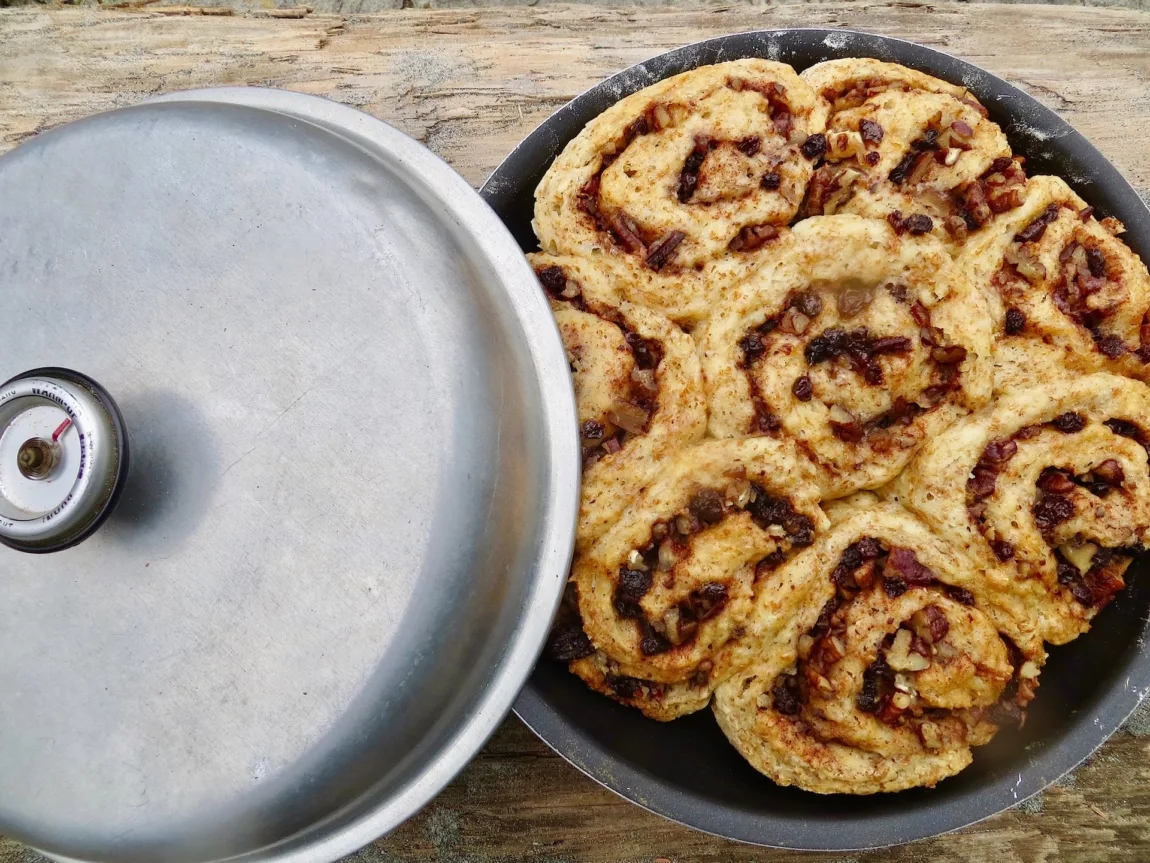Camp Cooking Doesn’t Have to Suck: Here’s How to Improve Your Experience

Camp Cooking Doesn’t Have to Suck: Here’s How to Improve Your Experience
June 17, 2025

The smell of fresh-baked bread drifting through camp. Crisp veggies and creamy smoked gouda alongside savoury seed crackers and rich hummus enjoyed lakeside at Waterton Park in Alberta as the peaks light up with sunset colours. Sharing perfectly crisp potato pancakes with new friends on a girls’ weekend in Kananaskis.
In my mind food isn’t just fuel—it’s part of the adventure. The right meal can turn an ordinary trip into something unforgettable.
And the best part? Camp cooking doesn’t have to suck.
Whether you’re in the front-country, backcountry or somewhere in between, here are my favourite tips—and a few hard-earned stories—to help you raise your camp cooking game.
Keep It Simple

When you’re starting out, don’t overthink it. Some of my most satisfying trail meals have been the simplest—like smoked gouda and apple quesadillas on a backpacking trip. Minimal ingredients. Maximum payoff.
Camp cooking doesn’t always mean firing up the stove. When energy’s low after a long hike or paddle, go tapas-style like we did on an overnight backpack trip in Waterton—and again on a multi-day paddle on the Red Deer River!
Lay out some sliced meats, cheese, olives, nuts and fruit. It feels like a five-star spread when you’re lounging by the river with a camp chair and a glass of vino.
If you’re backpacking and fresh ingredients aren’t an option, you can still get fancy. Dehydrate hummus. Pack dried salami or pepperoni and hard cheeses like asiago that last for days. Repackage olives and nuts into small containers. You now have an instant trail charcuterie board.
Stretch Your Skills

Baking bread in camp sounds impossible—until you try.
The first time I attempted it, we were days deep on a paddle trip down the Athabasca River. My secret weapon: a backcountry “oven” (it’s just a heat diffuser, frying pan, lid and coil thermometer). Time and patience are real keys.
Pro tip: Let your dough rise in a well-sealed plastic bag, warmed by the sun. Cloudy day? Tuck it inside your coat or sleeping bag and let body heat do the work. Just don’t forget it’s there and bust a move—a dough explosion inside your coat is memorable for all the wrong reasons.
Go Above and Beyond

Once you’ve got the basics down, start experimenting. Dehydrating food opens up all kinds of possibilities.
On a trip to Ribbon Lake in Kananaskis, my daughter and I rehydrated homemade salsa leather, shelf-stable bacon, dried kale chips, powdered eggs and shredded, dried potatoes to make crispy potato pancakes. The smell had nearby campers crawling out of their tents to investigate. When we offered to share, the smiles and new friendships that followed reminded me why I love camp cooking.
Save Room for Dessert

No meal is complete without a sweet ending—especially after an active day outdoors.
Chocolate fondue with fresh fruit is sheer bliss on a river trip. Baking powder biscuit cinnamon buns are always a hit. I also like baking a “cookie cake” on paddle trips—my craisin, coconut and pecan recipe baked as one big batch in the backcountry oven. It lasts for days (even with six hungry kayakers, like on our Nuchatlitz Park trip off Vancouver Island).
If you’d rather skip cooking, pair blue cheese with a sip of port. I usually add chocolate or nuts for the anti-stinky-cheese crowd (you know who you are).
One of my favourite discoveries? Dehydrated angel food cake and canned peaches, which I made for a paddle trip through the Broken Skull and Nahanni Rivers. Lightweight, easy and an instant hit. It’s now a must-pack for every backcountry trip.
Trial, Error and Turkey Dinner in a Bag

Let’s be honest: not every camp meal is a winner.
Turkey dinner in a bag—it sounded like a great idea at the time—is now a family punchline. But every flop teaches you something. When you find a winner, keep it in rotation!
Potato pancakes were as popular in the Yukon as they were in Alberta. Red curry chicken works fresh on the river and dehydrated for a backpacking trip to Aster Lake.
And here’s the golden rule: never attempt your fanciest dish after a long, hard day. Flexibility is the secret ingredient to camp cooking happiness.
Watch the Weather

Even the best-laid meal plans can get derailed by Mother Nature.
I once had my “terrific tortellini” with fresh basil and veggies planned for a river trip dinner—until purple-black clouds rolled in, the wind howled and a friend’s PFD not clipped into their canoe went airborne. That night, we had packaged soup and were grateful for it.
Sometimes soup is the smartest play. Tortilla soup is a cozy win when you can pack canned tomatoes and pre-cooked chicken in a cooler.
And always—always—set up a kitchen shelter. Rain, wind, blazing sun—you’ll be glad you did. One of my beloved memories is cooking Mediterranean stew under a tarp on the Oldman River, huddled with paddling friends as a supercell storm raged above us.
The warmth of the stew and the laughter we shared… Unforgettable.
Camp Cook Commendations

Sure, camp cooking takes a little more planning, packing and clean-up. But the reward? Full bellies, happy faces and stories you’ll be telling long after the tents are packed away.
When the wilderness is your dining room, every meal has the potential to be a five-star experience.
